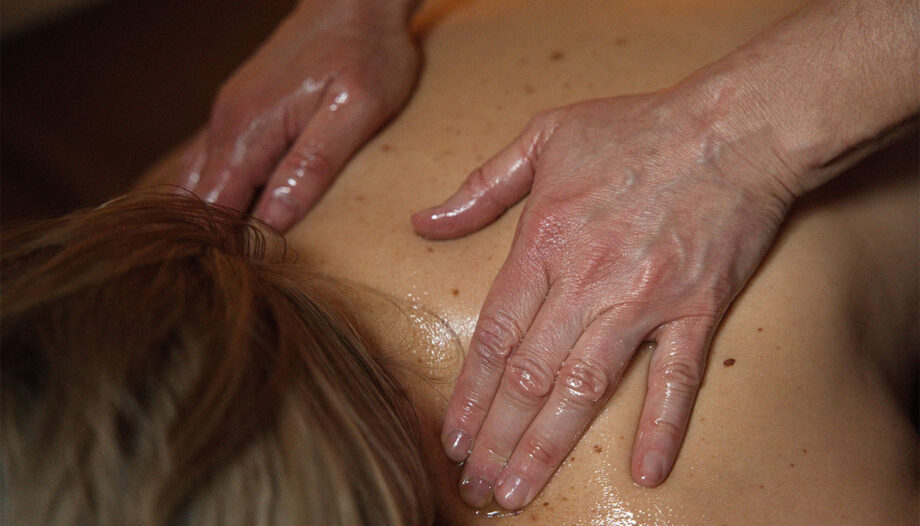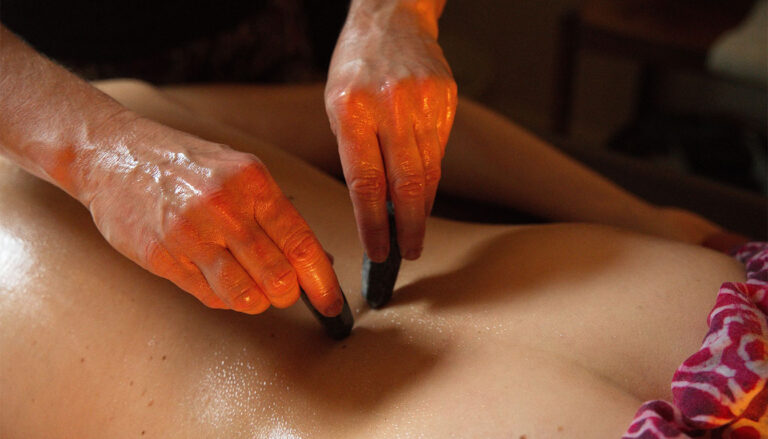A pinched nerve can cause a lot of discomfort and mess with daily life. Around 85 out of 100,000 adults experience this condition. This leads to numbness, pain that spreads out, and muscle weakness. Massage therapy is now a popular way to ease the pain. It doesn’t just work on muscles but also on the soft tissues around the nerves. Through this article, we explore how massage can do more than just relax. It can help people recover from a pinched nerve. However, it’s important to remember that massage doesn’t fix the root problem. Always check with a doctor to see if it’s right for you12.
If you’re looking for relaxation tips or need to find a good massage therapist in Edinburgh, you can check out this guide.
Introduction to Pinched Nerves
A pinched nerve, also called cervical radiculopathy, happens when tissues around a nerve press on it. This pressure can cause pain and discomfort. Symptoms include tingling, numbness, and burning sensations in different areas of the body3. It’s important to understand this condition to manage and relieve it effectively.
Many things lead to pinched nerves. Issues like sciatica, carpal tunnel syndrome, and degenerative disc disease can press on nerves4. Bad posture and doing the same motions over and over also increase the risk. This can affect health and daily life, causing pain that spreads to the arms and hands4.
Doctors often use tests like electromyography and MRI scans to find out if you have a pinched nerve3. Home treatments like heat therapy and yoga can help3. If you keep feeling pain, it’s important to get professional advice.
| Common Causes | Symptoms | Diagnostic Procedures |
|---|---|---|
| Bone spurs | Tingling | Electromyography |
| Herniated discs | Numbness | MRI scans |
| Poor posture | Burning pains | X-rays |
| Sports injuries | Muscle fatigue | Nerve conduction studies |
| Repetitive motion injuries | Blood tests |
Knowing what a pinched nerve is and its symptoms helps people take steps to get better. This prevents further injury43.
What Causes a Pinched Nerve?
A pinched nerve comes from different issues like a slipped disk or tight muscles. Arthritis causing degeneration is another key reason. Nerves may be squeezed if there’s damage in the spine, causing much discomfort.
There are three main pinched nerves: cervical, lumbar, and radial. Each has its own symptoms. For example, cervical nerves can cause neck, shoulder, or arm pain. You might also feel numb or tingly in your hands or fingers5.
Lumbar nerves affect your lower back, buttocks, or legs, sometimes leading to numb feet5. Radial nerves bring pain to the wrist or hand and numb fingers5.
Besides, tight ligaments, muscles, or tendons play a role, causing sharp pain down arms or legs6. Repetitive strain, obesity, and stress might also lead to these nerves being pinched6. It’s crucial to know these causes for effective treatment and relief.
Symptoms of a Pinched Nerve
Knowing the symptoms of a pinched nerve helps catch it early and start treatment. The symptoms can change a lot depending on where the nerve is pinched and how bad it is. People often feel numbness and tingling, which spread down the nerve.
If you have a pinched nerve in your neck, you might feel it in your shoulder and arm. This pain can be sharp or burn and gets worse when you move your neck. You might also feel numbness and tingling and your muscles could be weaker. This can make everyday tasks harder7.
Pinched nerves can be more painful when you’re sleeping, which can ruin your sleep. Studies show that over 68% of people in some health programmes feel less pain within 12 weeks7. It’s important to notice these symptoms early for quick treatment.
Putting a heating pad on the sore part for 10-15 minutes may help relax the muscles and increase blood flow8. However, ice is better in the first 48 hours to reduce swelling. Knowing these symptoms of a pinched nerve, like numbness and tingling, helps pinpoint the treatment.
Can Massage Therapy Help Pinched Nerve
Massage therapy is great for people with a pinched nerve. It helps lessen pain and increase relaxation. It also boosts blood flow. This support from massage therapy is backed by growing evidence, showing it’s a big help for those in pain.
Overview of Massage Therapy Benefits
Massage relieves muscle tension which often causes nerve pressure. The skilled touch of massage aims to ease discomfort. It can also lower inflammation in the affected spots. Studies show massage can free a pinched nerve from muscular pressure. It helps with numbness, weakness, and tingling9. Many see it as a key way to better manage their condition.
How Massage Reduces Pain and Inflammation
Massage boosts blood flow, helping to feed tissues and clear out waste. This may speed up healing. Methods like myofascial release and trigger point therapy focus on tight muscles. These can worsen a pinched nerve10. Getting massages regularly can slowly improve how well you move and feel.
It’s a good idea to talk to a health professional to plan out your care, especially as different lifestyle factors play a role in pinched nerves11.
Types of Massage Techniques Suitable for Pinched Nerves
Several massage types can help ease the discomfort of pinched nerves. Swedish massage and deep tissue massage stand out for their benefits. They’re tailored for the specific issues caused by nerve compression.
Swedish Massage: A Gentle Approach
Swedish massage uses long strokes and light pressure. It aims to ease muscle tension and boost relaxation without discomfort12. This method is especially good for people with symptoms from sitting wrong or who find pressure painful. It improves blood flow, aiding in recovery, and eases pain and stiffness, making it easier to move13.
Deep Tissue Massage: Is It Right for You?
Deep tissue massage reaches the deeper muscle layers. It’s often advised for strong pinched nerve pain12. Although it provides significant relief and targets tightness from stressed muscles or ligaments, one must be careful. Too much pressure might make the pain worse13. Massage therapists should tailor their approach to each person’s pain levels and needs.
When to Seek Professional Advice Before Massage
Before starting massage therapy for a pinched nerve, it’s important to talk to a healthcare provider. They can give professional advice on your pinched nerve issue. This is key to getting a full diagnosis and figuring out if massage is safe and suitable for you.
About 85 in 100,000 people in America feel the pain of pinched nerves each year14. Often, these discomforts are in the neck or back. But, they can also hit areas like the arms or wrists, as seen with tennis elbow or carpal tunnel syndrome14. Knowing exactly what’s wrong is the first step.
Picking how often to get massage therapy is also important. This depends on how bad and how long your pain has lasted. For example, starting with massages once or twice a month could help with lower back pain from a pinched nerve15. Once you start feeling better, you might need to keep up with treatments every four to six weeks15.
Regular talks with a massage therapist will help customize your treatment. This makes sure it fits your specific situation and needs perfectly. So, understanding when to consult a doctor about a pinched nerve matters a lot. It plays a big role in your recovery and in managing your health overall.
Get Relief for Your Pinched Nerve Today
Finding ways to get relief for pinched nerve discomfort is key to your daily life and health. Working with experts in massage therapy can offer effective relief. It’s worth mentioning that symptoms like tingling, weakness, and ongoing pain can lower your quality of life.
Seeing your therapist regularly helps find the right therapies to lessen pain and bring back function. Booking a massage therapy appointment lets therapists create a plan just for you, focusing on the painful areas. Methods like deep tissue or Swedish massage help ease tension and boost blood flow, aiding in recovery. For many, feeling better takes time, showing why staying consistent and guided is crucial.
Practicing self-care at home also enhances the benefits of professional therapy. Doing low-impact exercises, keeping a healthy weight, and getting enough rest can speed up recovery. Making ergonomic changes at work can also ease nerve discomfort.
To begin your recovery journey, set up an appointment with a therapist skilled in treating nerve issues. Listening to your body and talking openly with your therapists can lead to better treatment results.
Seek timely assistance for ongoing issues to explore further treatment options.
| Action Steps | Description |
|---|---|
| Consult a Therapist | Identify symptoms and tailor therapy plans. |
| Schedule Appointments | Regular sessions to manage symptoms effectively. |
| Implement Self-Care | Practice supportive exercises and adjustments at home. |
Being proactive today can lead to relief from pinched nerve issues, letting you live an active, pain-free life1617.
Conclusion
When it comes to treating a pinched nerve, massage therapy is highly effective in easing the discomfort. There are different massage techniques. Some are gentle, helping to relax, while others target specific areas of pain for relief. Research shows that massages can reduce pain and swelling from problems like compressed soft tissues, making life better.
Knowing what causes a pinched nerve is important. Things like symptoms and the type of nerve damage play a big part in choosing the right massage therapy. For something like neuropraxia, recovery might be quick. But axonotmesis could take a lot longer to heal completely18. Getting checked by a professional helps tailor the treatment, making it safe and effective.
Before starting any massage therapy for nerve damage, talking to a healthcare expert is wise. A therapist who knows how to handle such issues can make a big difference. Making sure you’re comfortable and can talk openly during sessions helps you get the most from the therapy19. It also helps you recover more smoothly.
FAQ
What is a pinched nerve?
A pinched nerve happens when tissues press too hard on a nerve. This causes pain, numbness, and a tingling feeling.
How can massage therapy help alleviate a pinched nerve?
Massage therapy boosts blood flow, eases muscle tension, and helps you relax. This can reduce the pain and swelling from a pinched nerve.
What are the common symptoms of a pinched nerve?
You might feel numbness, tingling, burning, sharp pain along the nerve, or weakness in the affected muscles.
Are there any risks associated with massage therapy for a pinched nerve?
Yes, it’s crucial to talk to a doctor before trying massage therapy. It might not be safe for some people, especially those with serious conditions.
What types of massage techniques are recommended for treating pinched nerves?
Gentle Swedish massage is often suggested. Deep tissue massage can also help with concentrated pain but must be used carefully.
How frequently should I have massage therapy for a pinched nerve?
How often you need massage therapy depends on your situation and how bad your symptoms are. Always get advice from a professional.
Can a pinched nerve resolve on its own?
Sometimes, a pinched nerve gets better with rest and care. Yet, if the symptoms stay, see a doctor to get the right treatment plan.
Is massage therapy a replacement for medical treatment?
No, massage therapy can help with symptoms but isn’t a substitute for medical care for underlying issues.
How can I find a qualified massage therapist for my pinched nerve?
Search for massage therapists with experience in nerve problems. Reading reviews or getting recommendations can help ensure they’re trustworthy.





